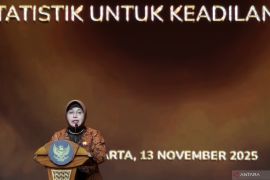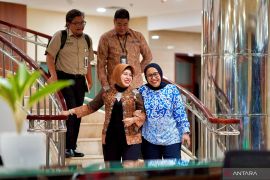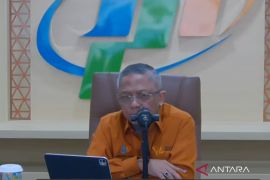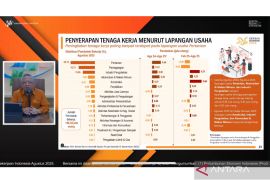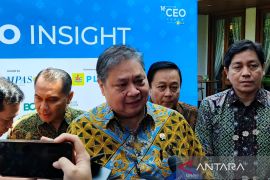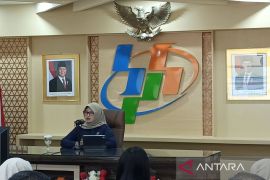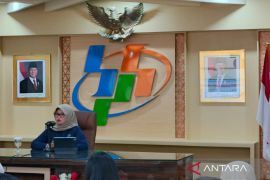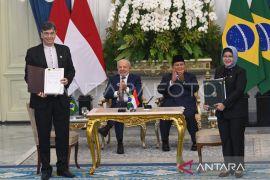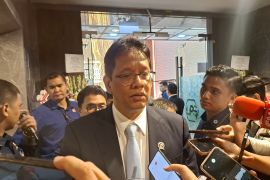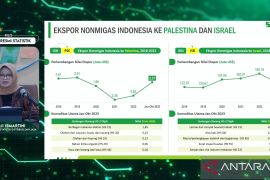ST2023 is the seventh agriculture census to be conducted by Statistics Indonesia (BPS) since it began in 1963 in accordance with the mandate set out in Law No. 16 of 1997 on Statistics.
Main Secretary of BPS Atqo Mardiyanto expects the result data of the ST2023 to be able to serve as a reference point in the formulation of more strategic policies in the agriculture sector.
The respondents targeted in ST2023 comprise individual agriculture enterprises (UTP), such as individual farmers, fishermen, fish cultivators, and forestry plant cultivators.
The census also targets the legal agricultural company (UPB) and other agriculture enterprise (UTL), such as farm group and farming activities undertaken by pesantren, or Islamic boarding school.
Director of Food Crop, Horticulture & Plantation Statistics at BPS Kadarmanto stated that the scope of ST2023's respondents is wider than the 2013 Agriculture Census that only targets farmer household or UTP.
Moreover, in ST2013, the data gathering was conducted only by using Paper-Assisted Personal Interviewing (PAPI). Meanwhile, in ST2023, data gathering is conducted using three methods.
These methods comprise PAPI, Computed-Assisted Personal Interviewing (CAPI), and Computer-Assisted Web Interviewing (CAWI).
"ST2023 now has an innovation in the form of three data gathering methods, namely PAPI, CAPI, and CAWI because the scope of respondents is more complete and not just agriculture households but also agriculture enterprises," Kadarmanto told ANTARA.
Differences between census methods
Through the PAPI method, workers use paper questionnaire to interview respondents. Meanwhile, with the CAPI method, workers use the electronic questionnaire available on their smartphone while interviewing respondents.
Meanwhile, the CAWI method allows respondents to answer the questionnaire independently through a web application.
ST2023 workers will apply the PAPI and CAPI methods to census individual agriculture units (UTPs) with two differing approaches between the UTP concentration region and non-UTP concentration region.
To census UTP in UTP concentration region, both in villages and cities, workers will visit farmers at their home or use the door-to-door approach to census using PAPI or CAPI.
Meanwhile, in the non-UTP concentration region, workers will use the snowball approach, namely by visiting the head of the local neighborhood to inquire about any UTP living in the area.
After the census, ST2023 workers will inquire whether the UPT knows about their neighbors, who are also farmers but have not been surveyed by the BPS.
Through this method, the number of UTP respondents in non-concentration regions can grow akin to a snowball effect. With this method, the census undertaken in non-UTP concentration regions, such as Jakarta, will be more effective.
To ensure the census' validity, census workers visit agriculture entrepreneurs by wearing official attributes that are easily identifiable, namely a hat with the ST2023 logo, an ID badge, and a letter of assignment from local BPS.
Meanwhile, for UPBs that are usually more organized, the BPS prioritizes census using the CAWI method wherein every UPB will be sent a WhatsApp message that contains an online questionnaire link that must be filled.
For UTL census, the CAPI method is prioritized.
Hence, the BPS offers UPB to fill their questionnaire independently. If they do not respond or they ask the workers to visit them, then the agency will ask workers to come and conduct census using the CAPI method.
If UTL cannot use CAPI, then the CAWI method will be used.
Questions within the questionnaire
The ST2023 questionnaire contains questions related to the seven agriculture sub-sectors: food crop, horticulture, plantation, fishery, animal husbandry, forestry, and agricultural service.
The questions asked by workers depend on the type of agriculture sub-sector that the respondent is working on.
According to Kadarmanto, not every question will be asked, but it depends on the commodities that the farmers are planting.
If an ST2023 worker is conducting census of rice farmers, for instance, then they will ask when did the farmer plant the rice, when they will harvest it, and how many kilograms of rice can be produced in every harvest season.
Through ST2023, the government expects to be able to gather information related to the types of agriculture plants, land area, land ownership status, cultivation techniques, and farmer profiles based on name and address.
Moreover, information related to the irrigation model, farmers' demographic status to know the number of millennial farmers and the number of micro, small and medium enterprises (MSMEs) and entrepreneurs in agriculture can also be gathered.
At the start of June 2023, some 196 thousand ST2023 workers across Indonesia had been deployed by BPS to census agriculture entrepreneurs.
Agriculture entrepreneurs are implored to not hesitate in giving honest answers in the ST2023 to realize the availability of accurate agriculture data.
The secrecy of the respondents' data and answers will also be protected by BPS in accordance with Statistics Law No. 16 of 1997.
Hence, as a result, farmers may welcome the arrival of census workers by giving honest answers as a foundation for accurate strategies and policies toward supporting food sovereignty and boosting farmers' prosperity.
Related news: Population census instrumental in Indonesia 2045 vision: BPS
Related news: Indonesia's population to reach 319 million in 2045
Editor: Rahmad Nasution
Copyright © ANTARA 2023

